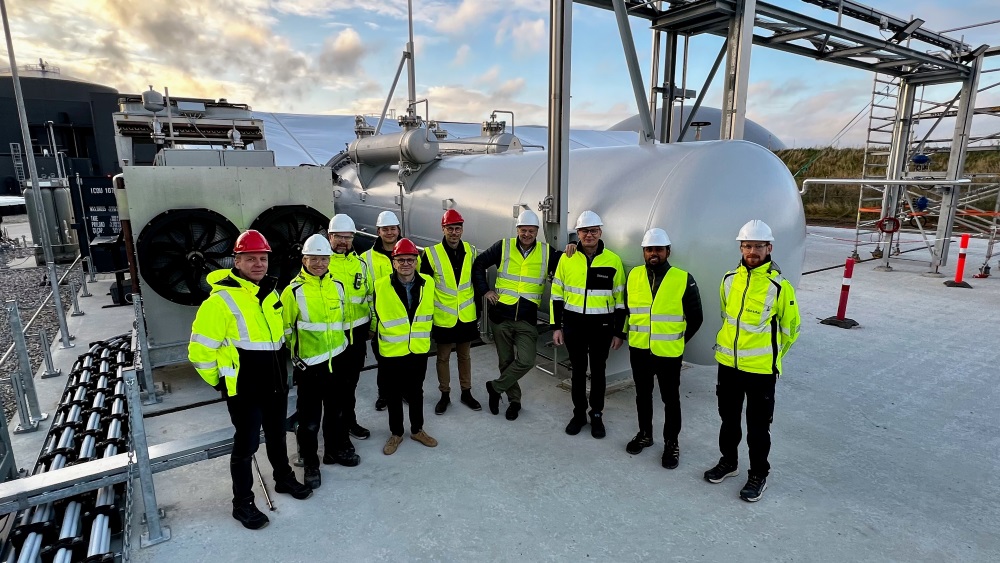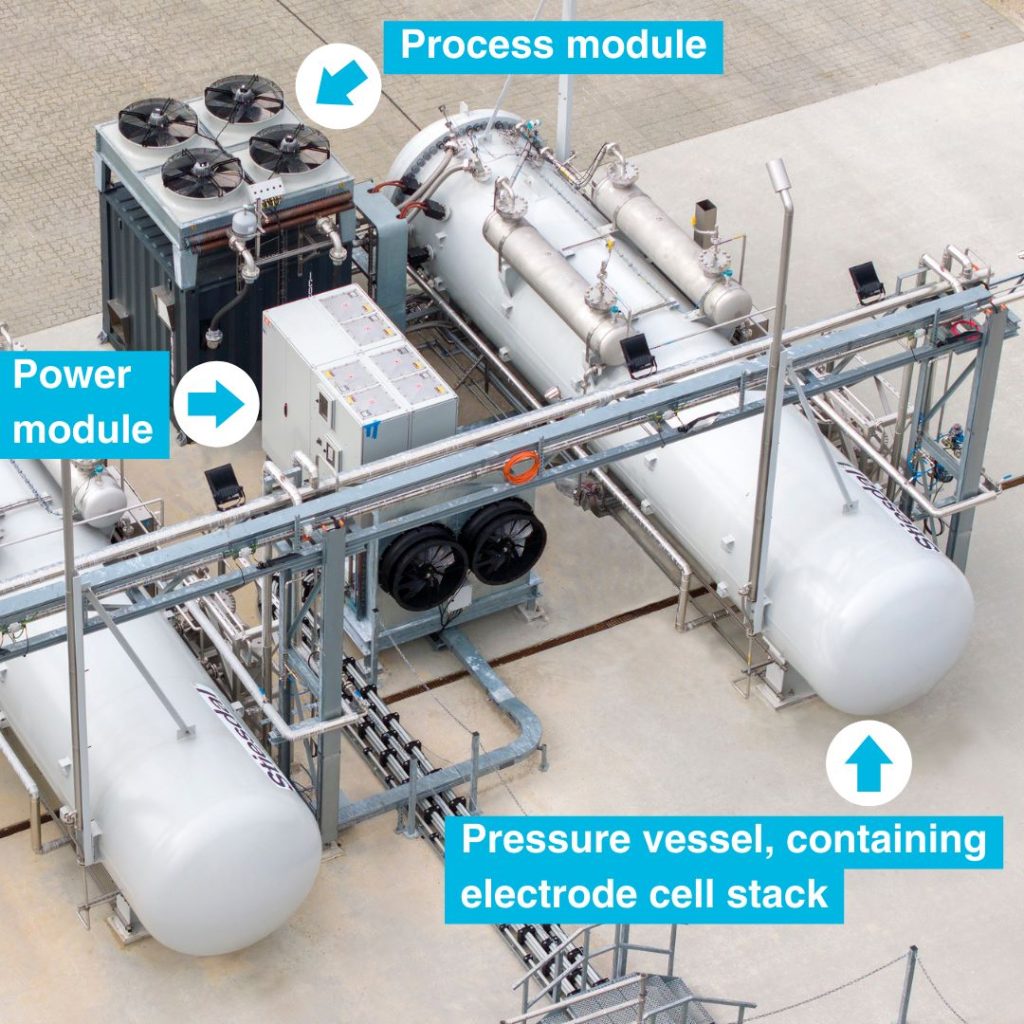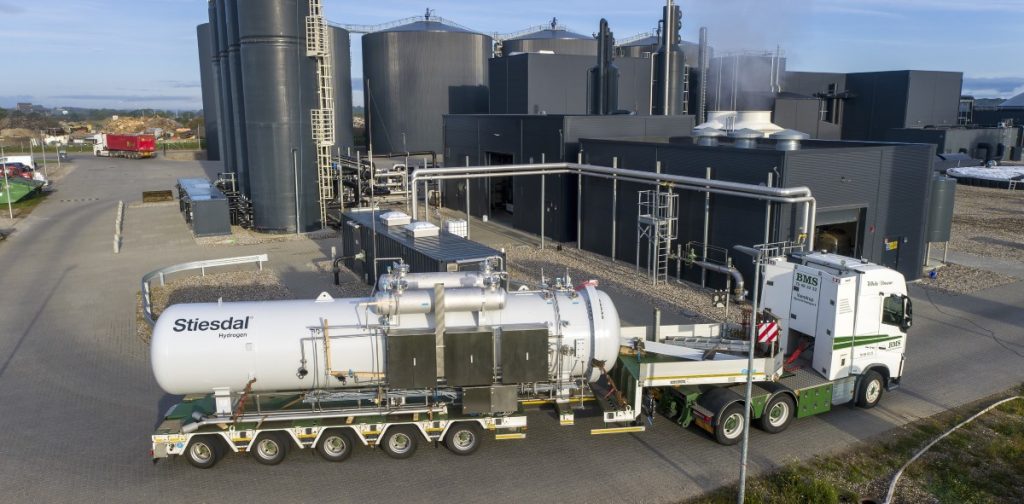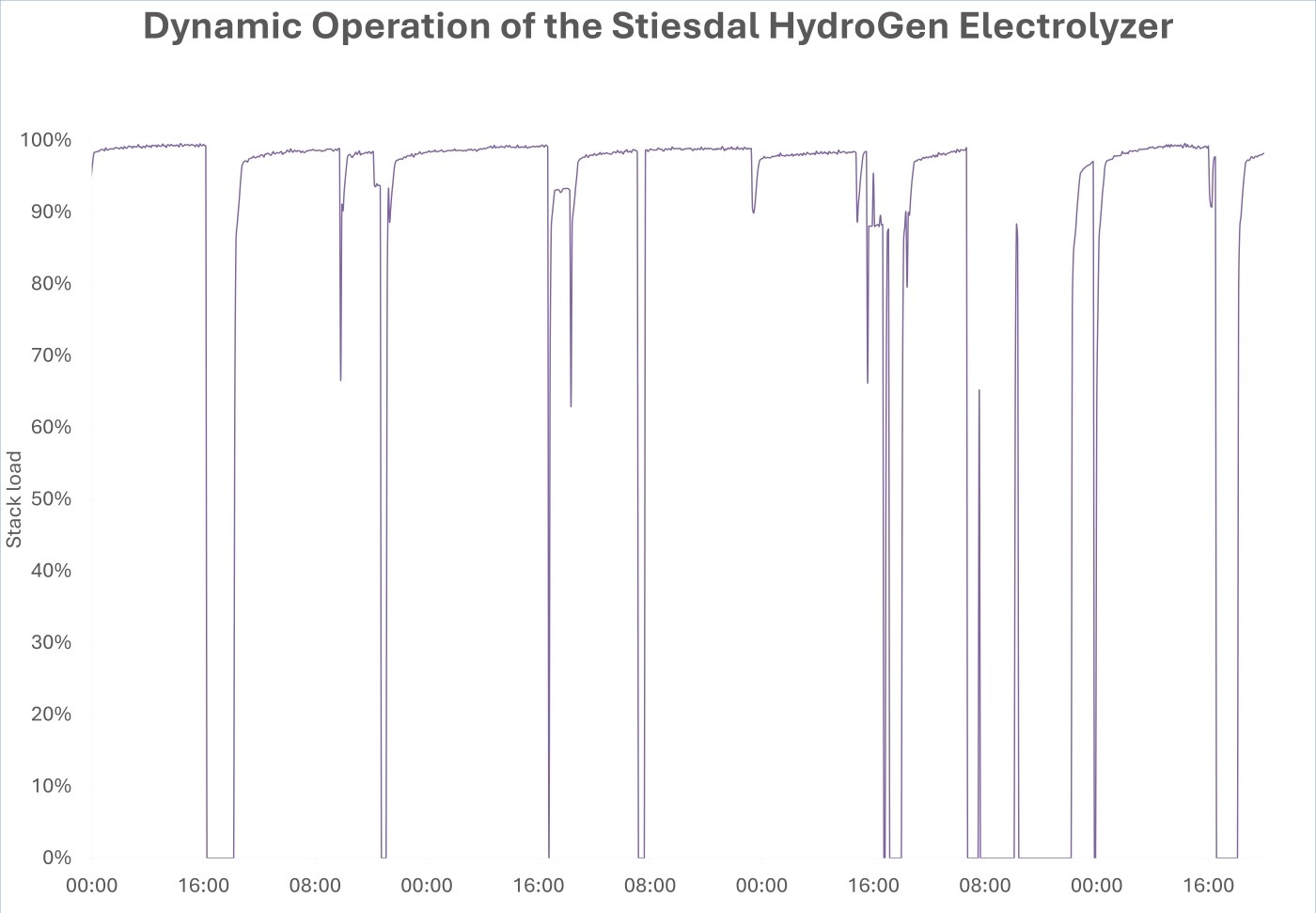Innovative approach
Stiesdal Hydrogen was established with the goal of transforming electrolyzer technology to meet the future demands of a decarbonized energy system.
Drawing from its experience in the wind industry, the Stiesdal Hydrogen team focused on applying the mindset of standardization, modularization, and industrialization to electrolysis for green hydrogen production. The application of this mindset in the wind and solar industries is the primary driver of the dramatic cost reductions that have made renewables competitive with fossil energy technologies, even when not taking the climate effects into account. It seemed clear to the Stiesdal Hydrogen team that the same approach could bring significant cost reductions and potentially make green hydrogen competitive with fossil hydrogen.
“Standardization, modularization, and industrialization would be required at two levels: both at the electrolyzer level and at the system level,” says Nielsen. Using well-known industrial approaches in the manufacturing of electrolyzers seemed doable, and this is actually already happening across most of the electrolyzer industry.”
At the system level, the picture was different. Hydrogen plants were still established according to the traditions of the chemical industry, with bespoke, non-standardized plants requiring extensive engineering, elaborate site work, and significant management efforts. Typically, the establishment of a hydrogen plant would require 12–18 month of effort on-site, and the total plant cost would run into 2–3 times the cost of the electrolyzer equipment.
Applying the wind industry mindset at the system level
As Nielsen explains, the wind industry is at a very advanced stage of modularization, and standardized processes are applied not only in equipment manufacturing but also in deployment. Blades, nacelles (the machinery at the top of the tower), towers, and control systems are typically manufactured at different locations and are only assembled on-site. Complete module testing is carried out against simulated interfaces with the other modules, and no matching test is required as part of the installation process. Infrastructure work on roads, foundations, cable laying, substations, etc., is carried out using standard specifications and drawings, and installation work is limited to assembly using bolted joints and the mounting of cables.
As a result of modularization and standardization, the total plant cost of an onshore wind farm is less than 1.5 times the cost of the wind turbine equipment.
“We approached the design similarly to how we design wind turbines, creating it in main modules that are manufactured at different locations and assembled on-site,” says Nielsen.
Stiesdal Hydrogen’s electrolyzer is composed of four main modules that form a self-contained system for outdoor installation: the electrode stack, the pressure vessel, the power supply module, and the auxiliary container. As in the wind industry, the modules are delivered from four different locations.
Scalability and operational reliability
One of the standout features of Stiesdal Hydrogen’s electrolyzer is its scalability. Each independent unit has a capacity of 3.1 MW, and these units can be combined to create larger plants. This modular approach, based on independent units, allows for flexible scaling based on the needs of the project.
The modular design also offers advantages in terms of redundancy and maintenance. If one unit requires maintenance, the rest of the plant can continue operating, minimizing downtime and ensuring continuous production.
This decentralized approach is reminiscent of the wind industry’s strategy of using multiple turbines to build a large wind farm, ensuring that the failure of one turbine does not halt the entire operation. “In a large-scale hydrogen production facility, having multiple smaller units provides redundancy. If one unit needs maintenance, the others can continue operating, which is critical for ensuring a stable hydrogen supply,” says Nielsen.
Additionally, each 3.1-MW plant can be transported to the end-user site on two standard trucks. The plug-and-play play nature of transportation and installation underscores the practical and scalable nature of the technology.
Stiesdal Hydrogen offers delivery of complete hydrogen production plants in cooperation with experienced EPC contractors. “It is sometimes difficult to fully grasp how simply it can be done,” says Nielsen. “We can assist in overcoming this barrier, both with simple balance-of-plant designs together with third-party contractors and with an already integrated electrolyzer design.”
Supply chain partnerships preferred over in-house manufacturing
Another wind industry-inspired strategy is the company’s approach to its supply chain. Instead of building its own manufacturing facilities, Stiesdal Hydrogen has opted to partner with established industrial players that supply key components for the company’s electrolyzer. The list of partners includes companies like Danfoss and KK Wind Solutions – Danish companies with a global footprint. “Our supply strategy focuses on what we excel at – innovating and commercializing technology – while collaborating with experts in manufacturing and quality assurance,” says Nielsen.
This approach allows Stiesdal Hydrogen to leverage existing, already industrialized production lines and benefit from the economies of scale that these established companies offer. It also provides the flexibility needed to navigate challenging market conditions, such as project delays and supply-chain disruptions. “By working with established partners, we can rapidly scale up production, which is crucial for meeting the growing demand for green hydrogen,” Nielsen adds.
Adapting the electrolyzer design to industrial manufacturing
When designing the electrolyzer, the Stiesdal Hydrogen team focused on the optimal use of materials and minimizing waste.
An example of this approach is the design of the electrode stack, which is rectangular instead of round and housed in a pressure vessel. The unique rectangular design, resembling a plate heat exchanger, minimizes material waste, reducing production costs and improving overall efficiency. “By designing a rectangular stack, we cut material waste to under 5%, compared to over 20% with a round stack,” Nielsen explains. “This not only reduces material waste but also significantly lowers production costs, making the electrolyzer more economically viable.”
“By designing a rectangular stack, we cut material waste to under 5%, significantly lowering production costs.”
A round stack design typically leads to substantial material wastage because the plates used in the stack are cut from large metal sheets, and the leftover material cannot be reused efficiently. The rectangular design, on the other hand, maximizes the use of raw materials and streamlines the manufacturing process. “By minimizing waste, we not only cut costs but also contribute to more sustainable production practices, aligning with our overall mission to support a greener future,” says Nielsen.
Housing the electrode stack in a pressure vessel allows for direct pressurized hydrogen delivery of up to 35 bars. This pressurized operation eliminates the need for additional compression systems in many use cases, providing a significant advantage in terms of efficiency and cost.
Additionally, the pressure vessel serves as a climate screen for the electrode stack, allowing for outdoor installation and eliminating the need for buildings. This setup further simplifies operations and maintenance, ensuring safer and more efficient handling of the electrolyzer.
The company has also developed a separate cooling circuit to address the issue of shunt currents, which are unwanted electrical paths that can lead to efficiency losses in electrolysis. “We integrated a separate cooling circuit with large manifolds, cooling with feed-in water to achieve high thermal control in the stack,” Nielsen explains. This non-conductive cooling system reduces losses at the DC level and improves the electrolyzer’s efficiency.
Core electrolyzer technology
Starting in 2020, the Stiesdal Hydrogen team selected pressurized alkaline technology for its electrolyzer, aligning with the company’s approach and expertise. After a thorough review, they chose this technology for its potential to combine the proven benefits of alkaline electrolysis with innovative flexibility improvements, minimize compression losses, and avoid the use of rare metals, making it both environmentally and economically viable.
Alkaline electrolysis is one of the oldest and most established methods for hydrogen production. Despite its advantages, alkaline electrolyzers have been traditionally characterized by relatively slow start-up times and poor ability to handle dynamic operation. Stiesdal Hydrogen saw an opportunity to address these challenges. “We believed we could solve some of the traditional challenges of alkaline technology, such as slow start-up times and poor ramp-up rates, which are critical for integration with renewable energy sources,” explains Nielsen.
Dynamic operation and short ramp-up times
One of the significant achievements of Stiesdal Hydrogen’s technology is its capability for dynamic operation. “Our dynamic ramp-up rate, with a start-up time under five minutes and ramp-up at 1% load per second, facilitates the use of alkaline technology in combination with fluctuating renewable electricity sources,” says Nielsen.
“Our dynamic ramp-up rate facilitates the use of alkaline technology in combination with fluctuating renewable electricity sources.”
The dynamic capability of Stiesdal’s electrolyzers is crucial for integrating hydrogen production with renewable energy sources, which are inherently variable. It allows the system to follow volatile electricity spot prices and adapt to standalone wind and solar PV output. By debunking the myth that alkaline technology is slow and inflexible, Stiesdal Hydrogen opens new possibilities for using alkaline electrolyzers in applications currently dominated by other electrolyzer technologies. “We are essentially redefining what alkaline electrolyzers can do, making them suitable for a wider range of applications,” Nielsen explains.
Meeting diverse market needs
Stiesdal Hydrogen’s electrolyzer is engineered to cater to a broad spectrum of end-use requirements. A range of solutions for the balance of plant allows for differences in feed water purities and downstream gas cleanliness requirements. “We designed our product to cater to as wide an off-take as possible,” explains Nielsen.
“We designed our product to cater to as wide an off-take as possible.”
The company’s primary focus is on producing bulk green hydrogen to meet the escalating demand across various sectors. By ensuring its technology can adapt to diverse end-use scenarios, Stiesdal Hydrogen aims to maximize its market potential. “Our goal is to provide a flexible, scalable solution that can meet the diverse needs of the green hydrogen market, from traditional hydrogen-consuming industries to new applications and beyond,” says Nielsen.
Projects and outlook
Stiesdal Hydrogen’s technology is already deployed in real-world applications as the company has delivered three units of the HydroGen Electrolyzer for clean energy projects in Denmark.
The first project involves using the hydrogen produced from two Stiesdal Hydrogen units to upgrade raw biogas, which has a 40% CO₂ content, to almost pure methane. This process not only improves the fuel production efficiency of biogas plants but also provides a sustainable use for the CO₂, which would otherwise be emitted into the atmosphere.
The second project focuses on trailer filling, highlighting the electrolyzer’s ability to support hydrogen mobility applications.
“We are gaining operating hours quickly, and our technology readiness level is increasing.”
Looking ahead, the company is in discussions with several project developers, particularly in Europe, to deploy its technology in large-scale projects. With a technology readiness level of 7, Stiesdal Hydrogen is well on its way to commercializing its dynamic alkaline electrolyzer. “We are gaining operating hours quickly, and our technology readiness level is increasing. The task now is to bring it to the wider market,” concludes Nielsen.








